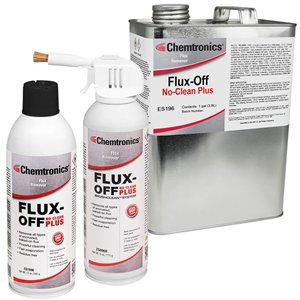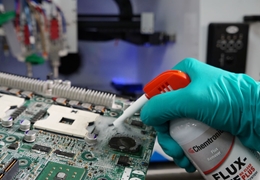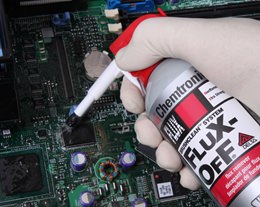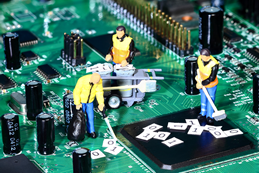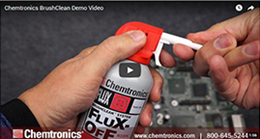Flux-Off No Clean Plus
Powerful economical flux remover for cleaning no-clean flux
Flux-Off® No Clean Plus Flux Remover is an extra strength solvent that removes heavy and encrusted flux deposits. This high pressure aerosol or bulk liquid penetrates quickly to remove all types of flux, oxide particles, dust, grease and oil, then evaporates quickly leaving no residues.
Available with The BrushClean™ System - Gentle scrubbing action of a brush combined with high performance flux remover. Click here for more information.
Features & Benefits
- Removes all types of encrusted, baked on flux
- Extra cleaning strength
- Flammable
- Dries fast
- Leaves no residue
- All-Way Spray valve - even sprays upside down
- Available with BrushClean™ System
Applications
- Removes all types of rosin-based and synthetic no-clean fluxes
- Minimizes white residue formation
| TDS | |
| REGS | |
| SDS | |
| Categories |
| Shelf Life | 5 yrs. |
|---|---|
| Shipping Name | Consumer Commodity ORM-D |

